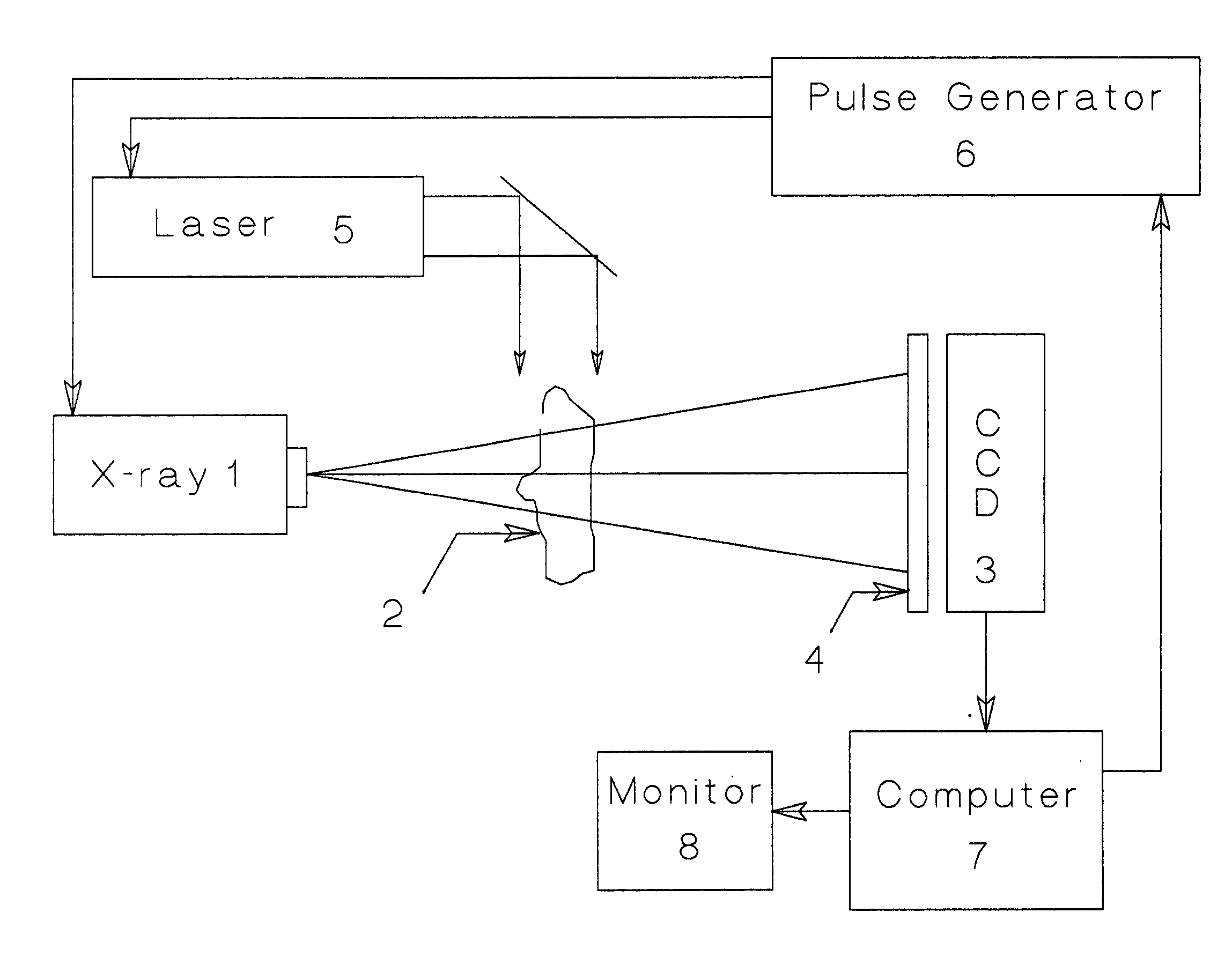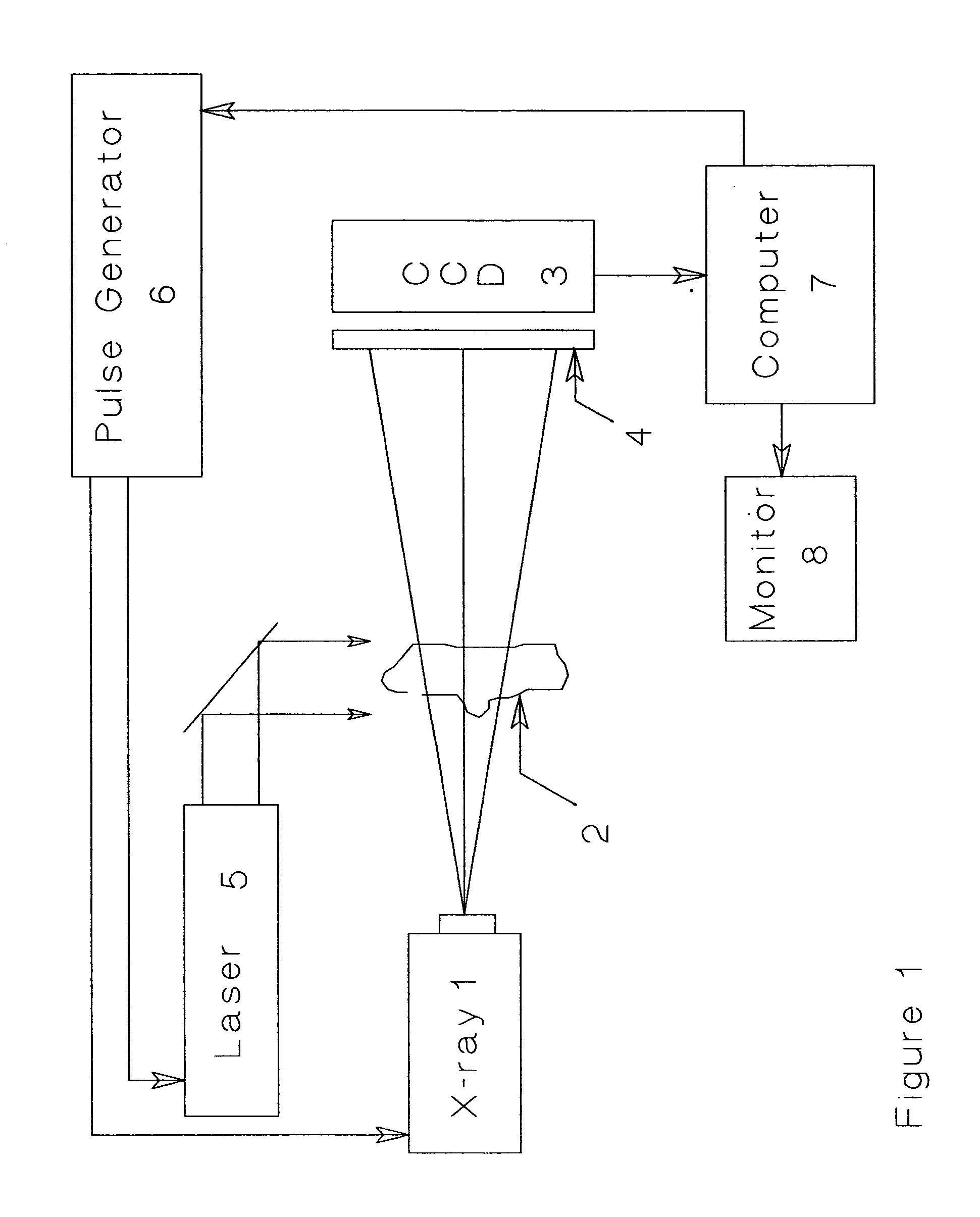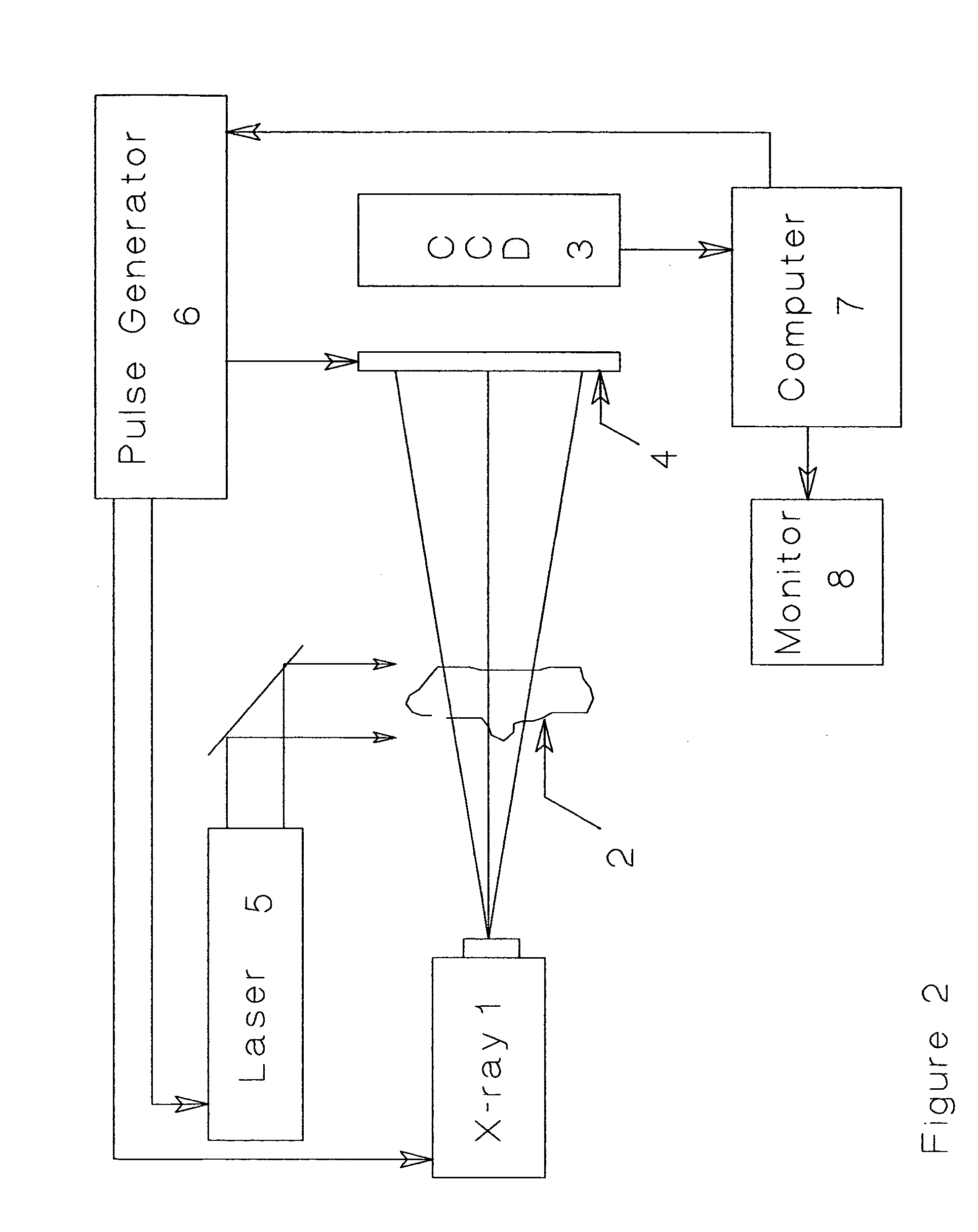Method and apparatus for photothermal modification of x-ray images
a technology of x-ray images and photothermal modification, which is applied in the field of imaging and non-destructive testing through xradiation, can solve problems such as interference in the production of images, and achieve the effect of increasing the volume of heated objects
- Summary
- Abstract
- Description
- Claims
- Application Information
AI Technical Summary
Benefits of technology
Problems solved by technology
Method used
Image
Examples
Embodiment Construction
[0035] Referring now to the drawing, the elements comprising a preferred embodiment of the apparatus comprising the invention consists of an x-ray source 1, a body to be examined 2, and a CCD camera or equivalent imaging forming device 3 for recording the x-ray intensity pattern after the x-rays traverse the body, with or without the use of a phosphor screen 4 that converts x-ray photons into radiation (typically visible) suitable for detection by the CCD.
[0036] For the purpose of the present invention optical radiation is defined as laser radiation from the ultraviolet and visible to and the near infrared regions of the spectrum, microwaves, and radio-frequency radiation i.e. any region of the electromagnetic spectrum where absorption contrast between the object of interest and its surroundings is maximal. Additionally, gated image intensifier shall refer to a device that converts x-ray photons to visible photons (with gain) that can be gated on and off electronically, or a device...
PUM
| Property | Measurement | Unit |
|---|---|---|
| diameter | aaaaa | aaaaa |
| wavelength | aaaaa | aaaaa |
| diameter | aaaaa | aaaaa |
Abstract
Description
Claims
Application Information
 Login to View More
Login to View More - R&D
- Intellectual Property
- Life Sciences
- Materials
- Tech Scout
- Unparalleled Data Quality
- Higher Quality Content
- 60% Fewer Hallucinations
Browse by: Latest US Patents, China's latest patents, Technical Efficacy Thesaurus, Application Domain, Technology Topic, Popular Technical Reports.
© 2025 PatSnap. All rights reserved.Legal|Privacy policy|Modern Slavery Act Transparency Statement|Sitemap|About US| Contact US: help@patsnap.com



